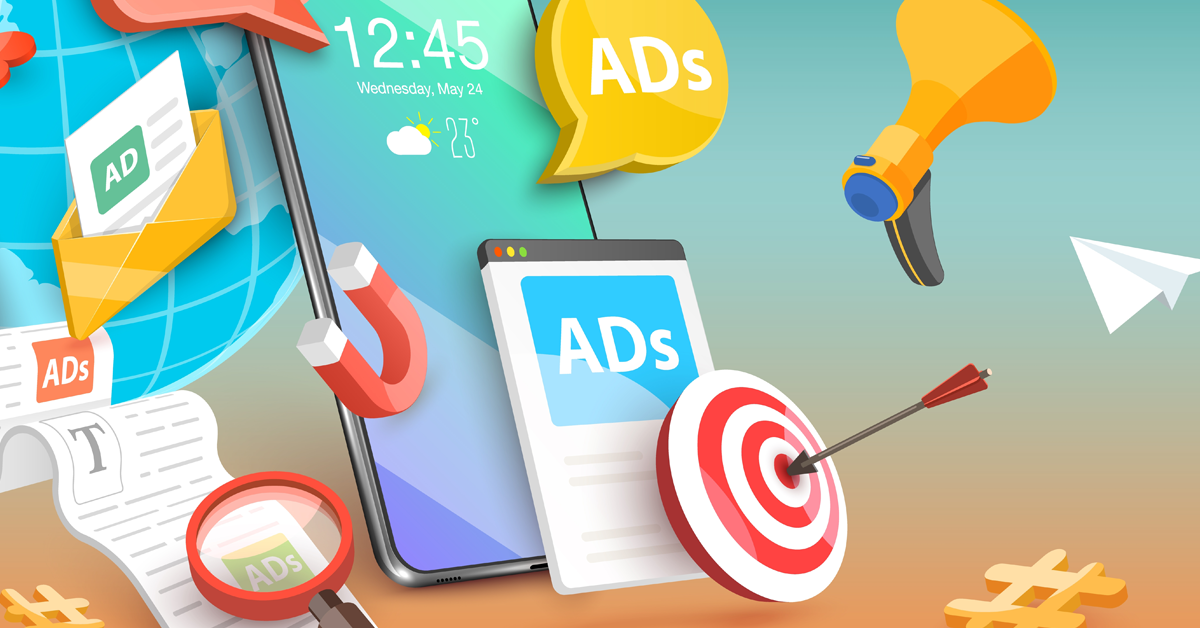Retargeting Ads Explained: Advanced Strategies for 2025
Retargeting (also called remarketing) continues to be one of the highest-ROI advertising strategies available, with average conversion rates 2-3x higher than standard prospecting campaigns. Yet as privacy regulations evolve and consumer expectations shift, retargeting strategies must adapt accordingly.
This comprehensive guide will explore advanced retargeting strategies that balance performance with privacy in 2025’s digital landscape.
Understanding Retargeting in the Post-Cookie Era
The foundations of retargeting have evolved significantly as third-party cookies phase out and privacy regulations tighten. Modern retargeting relies on:
- First-party data collection (website behavior, app usage, CRM)
- Cookieless tracking solutions (server-side tracking, fingerprinting alternatives)
- Platform-based audience solutions (Google’s PAIR, Facebook’s Conversions API)
- Contextual retargeting (content-based rather than user-based)
- People-based identification (email-based matching, unified IDs)
Key Privacy Considerations
Before implementing any retargeting strategy, ensure compliance with:
- General Data Protection Regulation (GDPR) in Europe
- California Consumer Privacy Act (CCPA) and similar state laws
- Platform-specific policies from Google, Meta, etc.
- Industry-specific regulations for finance, healthcare, etc.
Best practice: Implement a comprehensive consent management platform that documents user consent choices and respects privacy preferences across all marketing channels.
The Retargeting Ecosystem: Platforms and Options
Platform Comparison
| Platform | Targeting Capabilities | Creative Formats | Minimum Audience Size | Key Advantage |
|---|---|---|---|---|
| Google Ads | Website visitors, YouTube viewers, App users | Text, Display, Video, Shopping | 100 users | Cross-property targeting |
| Meta Ads | Website, App, Engagement, Customer Lists | Image, Video, Carousel, Stories | 100-1000 users | Detailed segmentation |
| Microsoft Ads | Website visitors, Customer match | Text, Display, Video | 300 users | B2B targeting |
| TikTok | Website, App, Engagement | Video, Carousel | 1000 users | Creative engagement |
| Programmatic | Cross-site behavior, Contextual | Display, Video, Native | Varies | Reach and frequency |
Retargeting Types
Modern retargeting extends beyond simple website visitor targeting:
- Behavioral retargeting - Based on specific actions taken
- Engagement retargeting - Based on content or ad engagement
- CRM retargeting - Based on customer database information
- Search retargeting - Based on search queries performed
- Contextual retargeting - Based on content consumption patterns
- Cross-device retargeting - Following users across multiple devices
- Sequential retargeting - Showing ads in a specific narrative order
Advanced Segmentation Strategies
The most effective retargeting doesn’t treat all previous visitors the same. Consider these segmentation approaches:
Behavior-Based Segmentation
Create segments based on specific user actions:
- Product viewers - Showed interest but didn’t purchase
- Cart abandoners - Added to cart but didn’t check out
- Checkout abandoners - Started checkout but didn’t complete
- Search abandoners - Searched but didn’t view products
- Content consumers - Read blog/content but didn’t explore products
Intent-Based Segmentation
Group users based on signals of purchase intent:
- High intent - Viewed multiple products, checked shipping, etc.
- Medium intent - Viewed product details, checked specs
- Low intent - Brief browsing behavior only
- Research phase - Compared similar products, read reviews
Recency-Based Segmentation
Create time-based segments for different messaging:
- 0-24 hours - Hot prospects, direct offer
- 2-7 days - Warm prospects, reminder messaging
- 8-14 days - Cooling prospects, incentivized offers
- 15-30 days - Cold prospects, reengagement content
Value-Based Segmentation
Target differently based on potential customer value:
- High-value prospects - Based on products viewed or predictive scoring
- Previous high-value customers - Based on purchase history
- Frequent purchasers - Based on transaction frequency
- Brand advocates - Based on engagement and sharing behavior
Creating a Comprehensive Retargeting Strategy
The Retargeting Matrix Framework
For each key segment, develop messaging that addresses their specific situation:
| Segment | Message Focus | Offer Strategy | Creative Approach | Frequency Cap |
|---|---|---|---|---|
| Cart Abandoners (0-24h) | Urgency, Reminder | Reserved Cart, Free Shipping | Product-specific, Testimonials | 6-8 per day |
| Product Viewers (0-7d) | Benefits, Use Cases | Small Discount (5-10%) | Product Benefits, Reviews | 4-5 per day |
| Blog Readers (0-14d) | Education, Solutions | Content Upgrades | Problem-Solution, Guides | 2-3 per day |
| Past Customers (30d+) | New Items, Updates | Loyalty Rewards | New Arrivals, Exclusivity | 1-2 per day |
The Retargeting Funnel Approach
Design sequential messaging that moves prospects through your funnel:
- Awareness retargeting - Target content consumers with brand messaging
- Consideration retargeting - Target product viewers with detailed information
- Decision retargeting - Target high-intent visitors with offers and incentives
- Post-purchase retargeting - Target buyers with upsells and cross-sells
Crafting Effective Retargeting Creative
Best Practices for Retargeting Ad Content
Retargeting creative requires a different approach than prospecting ads:
- Acknowledge the previous interaction - “Thanks for checking out our [Product]”
- Address potential objections - “Wondering about [common concern]?”
- Add new information - Don’t just repeat what they’ve already seen
- Include social proof - Reviews, testimonials, usage statistics
- Create urgency when appropriate - Limited stock, time-based offers
- Test different angles - Feature vs. benefit focus, emotional vs. rational appeals
Dynamic Retargeting Optimization
Leverage dynamic creative to personalize at scale:
- Product-based dynamic ads - Showcase previously viewed items
- Category-based recommendations - Show related products from viewed categories
- Complementary product suggestions - “Complete the look” or “Frequently bought together”
- Price-drop alerts - Notify when watched items go on sale
Advanced Retargeting Techniques for 2025
Cross-Channel Retargeting Orchestration
Coordinate messaging across multiple platforms:
- Initial engagement - Display network (awareness, broad reach)
- Mid-funnel nurturing - Social platforms (engagement, consideration)
- High-intent conversion - Search and shopping (direct response)
- Retention and upsell - Email and app (personalized offers)
Sequential Story-Telling Through Retargeting
Develop a narrative arc across multiple ad exposures:
- Ad 1: Introduce the problem and hint at solution
- Ad 2: Present your solution and its key benefits
- Ad 3: Provide social proof and credibility elements
- Ad 4: Present specific offer with clear call to action
- Ad 5: Create urgency or address remaining objections
Predictive Retargeting
Use AI and machine learning to optimize beyond simple rules:
- Propensity modeling - Target users most likely to convert
- Optimal time targeting - Show ads when users are most receptive
- Next best action prediction - Determine ideal next message for each user
- Churn prediction - Identify and retain at-risk customers
- Customer lifetime value prediction - Adjust bidding based on projected value
Implementation: Setting Up Advanced Retargeting Campaigns
Technical Implementation Checklist
Before launching campaigns, ensure proper technical setup:
- Tracking implementation - Server-side API connections where possible
- Audience definition - Clear segment creation with appropriate lookback windows
- Creative development - Multiple formats and messages for each segment
- Frequency capping - Appropriate limits to prevent ad fatigue
- Exclusion setup - Proper exclusions for converters and non-targets
- Attribution model - Proper credit allocation for retargeting touchpoints
- Privacy compliance - Consent management and data usage policies
Platform-Specific Setup Tips
Google Ads:
- Use “Optimized targeting” to expand beyond your exact retargeting list
- Implement Smart Bidding strategies like Target ROAS for auction-time optimization
- Create separate campaigns for different segments rather than just ad groups
Meta Ads:
- Use Conversions API alongside pixel for more complete data
- Leverage value-based lookalikes from your retargeting segments
- Implement Advantage+ campaigns for automated creative optimization
Programmatic:
- Work with providers offering cookieless targeting solutions
- Prioritize platforms with strong contextual capabilities
- Implement frequency management across the entire media mix
Measuring Retargeting Performance
Key Performance Metrics
Beyond basic CTR and conversion metrics, evaluate:
- View-through conversions - Conversions after ad views without clicks
- Incremental lift - Performance compared to control groups
- Multi-touch attribution impact - Influence within the full customer journey
- Retention and LTV impact - Effect on customer lifetime value
- Brand metrics - Awareness, consideration, and preference improvements
- Frequency to conversion - Number of ad exposures needed for conversion
- Time to conversion - Duration from first retargeting exposure to conversion
Setting Up Proper Measurement
To accurately measure retargeting impact:
- Implement holdout groups - Randomly exclude some eligible users from retargeting
- Use incrementality testing - Compare results to determine true incremental value
- Account for channel interaction - Analyze how retargeting affects other channels
- Look beyond last-click - Use multi-touch attribution models
- Monitor view-through impact - Track conversions that occur after ad impressions
Common Retargeting Challenges and Solutions
Challenge 1: Ad Fatigue
Problem: Users seeing the same ads repeatedly, leading to declining performance
Solutions:
- Implement frequency capping (typically 2-3 impressions per day)
- Create rotation groups with multiple creative variations
- Use dynamic creative to maintain freshness
- Develop a creative refresh calendar (new versions every 2-3 weeks)
- Segment users by engagement level and adjust frequency accordingly
Challenge 2: Privacy Limitations
Problem: Reduced tracking capabilities due to privacy regulations and browser changes
Solutions:
- Prioritize first-party data collection
- Implement server-side tracking where possible
- Use contextual targeting as a complementary approach
- Leverage platform-specific identity solutions
- Explore privacy-preserving computation methods
- Diversify tracking beyond cookies (email-based, in-app)
Challenge 3: Attribution Accuracy
Problem: Difficulty determining retargeting’s true incremental impact
Solutions:
- Implement conversion lift studies with control groups
- Use multi-touch attribution models
- Analyze view-through conversions with appropriate credit
- Conduct geo-based testing to measure regional impact
- Balance performance metrics with incrementality insights
Case Studies: Retargeting Success Stories
Case Study 1: E-commerce Segmentation Strategy
An online retailer implemented advanced segmentation for their retargeting:
Approach:
- Created 15 distinct audience segments based on product category, price point, and browse behavior
- Developed custom messaging for each segment addressing specific concerns
- Implemented sequential frequency rules based on recency
- Used dynamic product ads with personalized recommendations
Results:
- 218% increase in retargeting ROAS compared to previous approach
- 34% reduction in ad fatigue metrics
- 47% improvement in click-through rates
- 22% increase in average order value
Case Study 2: B2B Full-Funnel Retargeting
A SaaS company created a sophisticated content-based retargeting funnel:
Approach:
- Segmented website visitors based on content consumption patterns
- Created educational retargeting sequences for early-stage prospects
- Developed feature-focused ads for mid-funnel evaluation stage
- Implemented case study and ROI calculator ads for decision stage
- Added post-demo nurturing sequences for pending decisions
Results:
- Reduced sales cycle by 27 days on average
- Increased demo requests by 43%
- Improved lead-to-opportunity conversion by 35%
- Generated 28% more enterprise deals from nurtured leads
Future-Proofing Your Retargeting Strategy
As the digital landscape continues to evolve, prepare your retargeting strategy for the future:
- Invest in first-party data collection - Build direct relationships with users
- Develop cookieless measurement approaches - Prepare for further tracking limitations
- Test emerging identity solutions - Explore unified ID alternatives
- Balance personalization and privacy - Find the right level of targeting specificity
- Explore contextual targeting opportunities - Complement user-based approaches
- Leverage AI for optimization - Use machine learning for smarter targeting and bidding
- Create cross-platform measurement frameworks - Understand holistic performance
Conclusion: Building Your Retargeting Action Plan
Retargeting remains one of the highest-ROI digital advertising strategies available, but implementation must evolve with changing technology and privacy expectations.
To maximize success:
- Start with strategy - Define clear objectives and customer journeys before implementation
- Segment thoughtfully - Create meaningful audience divisions based on behavior and intent
- Personalize appropriately - Balance relevance with privacy considerations
- Measure incrementally - Understand true impact beyond basic metrics
- Test continuously - Regularly explore new approaches and creative concepts
By implementing these advanced retargeting strategies, you’ll not only improve conversion rates but also create more relevant, timely advertising experiences that respect user privacy while driving business results.
What retargeting challenges are you facing in your campaigns? Share in the comments below, and we’ll help you solve them!




